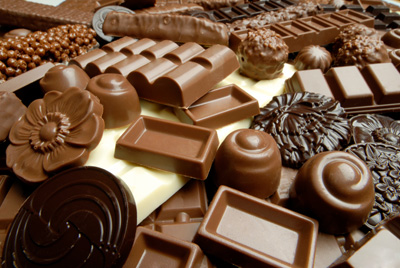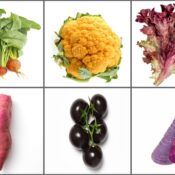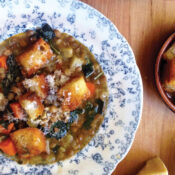In the late 19th century, a man by the name of Milton Hershey bought a new technology to help him produce a chocolate coating for his caramels. What Hershey could not have known was that this new technology would be his “bread and butter,” not his caramels. Within a few years, he made this keen observation: “Caramels are only a fad. Chocolate is a permanent thing.” In 1903, Hershey began the Hershey Chocolate Company and began a chocolate revolution in the United States. Through his methods of mass-production, he was able to lower the cost of the chocolate and make it an affordable luxury item.
Over a century later, chocolate is still a “hot topic.” In recent years, chocolate as an industry has even seen a rebirth. Instead of mass-production and affordability, chocolate has moved into niche markets as a diet and health food, a delicacy to accompany wines and cheese, and a mood-enhancer. Mass-produced chocolates are still highly popular, but a growing number of chocolate lovers are finding pleasure in these new offerings.
Here at the Post, we have a variety of chocolate lovers. We thought our readers would enjoy a series of postings that look at the history and the future of chocolate!
Let’s begin with a brief introduction to the key terms:
Cacao (%): The term refers to the ingredients derived from the cocoa bean. The source of the cacao components are “chocolate liquor” — the term used to describe the pure (nonalcoholic) chocolate in liquid form, cocoa butter, and cocoa powder. The” % cacao” refers to the percentage of these ingredients, by weight, in the finished product.
Dark Chocolate: The term “dark chocolate” is not defined by regulation in the US. Within the industry however, it is used to refer to both sweet and bittersweet chocolates containing high levels of chocolate liquor. Many dark chocolates on the market today contain more than 35% chocolate liquor. It is common to see dark chocolates containing 45-80% cacao on the market today. Dark chocolates may contain milk fat to soften the texture, but do not generally have a milky flavor.
Milk Chocolate: The most common kind of eating chocolate; it is made by combining chocolate liquor, cocoa butter, milk or cream and, sweeteners such as sugars and flavorings. According to the FDA regulations, all milk chocolate must contain at least 10% chocolate liquor and at least 12% milk solids. The only fats allowed in milk chocolate are milk fat and cocoa butter. The varieties of milk chocolates in the market are expanding. Some high cacao % milk chocolates are essentially dark chocolates with additional dairy ingredients.
White Chocolate: White chocolate is a blend of cocoa butter, milk, sugar, and flavor. No chocolate solids other than cocoa butter are present, which explains the lack of brown color. According to US regulations, white chocolate needs to be at least 20% (by weight) cocoa butter, at least 14% total milk solids, and less than 55% sweeteners (such as sugar.)
Please join us over the next few Fridays as we explore chocolate. Our chocolate postings will help you determine which chocolates you like, and encourage you to try something new.
More chocolate information may be found at the National Confectioners Association website – www.candyusa.com
Become a Saturday Evening Post member and enjoy unlimited access. Subscribe now




Comments
Of course a great article about chocolate as I am giving it up for lent! Can’t wait for lent to be over so I can indulge!
It’s good to see that other men like chocolate as much as me
Chocolate, like good red wine, is proof that God loves all his children!
Try Danish ANTON BERG. Not easy to find but worth the trouble. Some vendors sell from their web sites.
Good article. Now I want a T-shirt I’ve seen which says, “Hand over the chocolate and nobody will get hurt!”
Yummo — the darker the better!!
Okay, even I had to indulge in a Nestle Crunch …. Kylie made me do it … I swear, but truth be told, I have developed an appreciation for good chocolate and look forward to your explorations!
What a yummy topic. Looking forward to the series!
Now I know why I am a chocoholic. I love chocolate! Good idea for an article series.
Read the article on Chocolate and had to go out and buy a bar! It is one of my favorite foods.